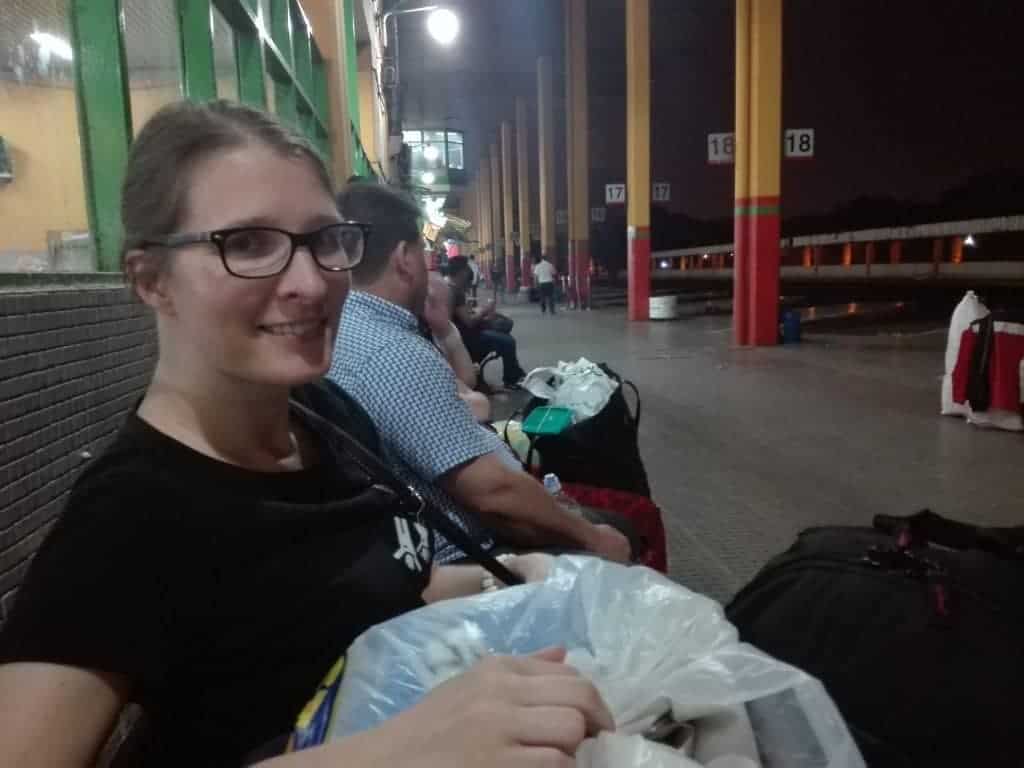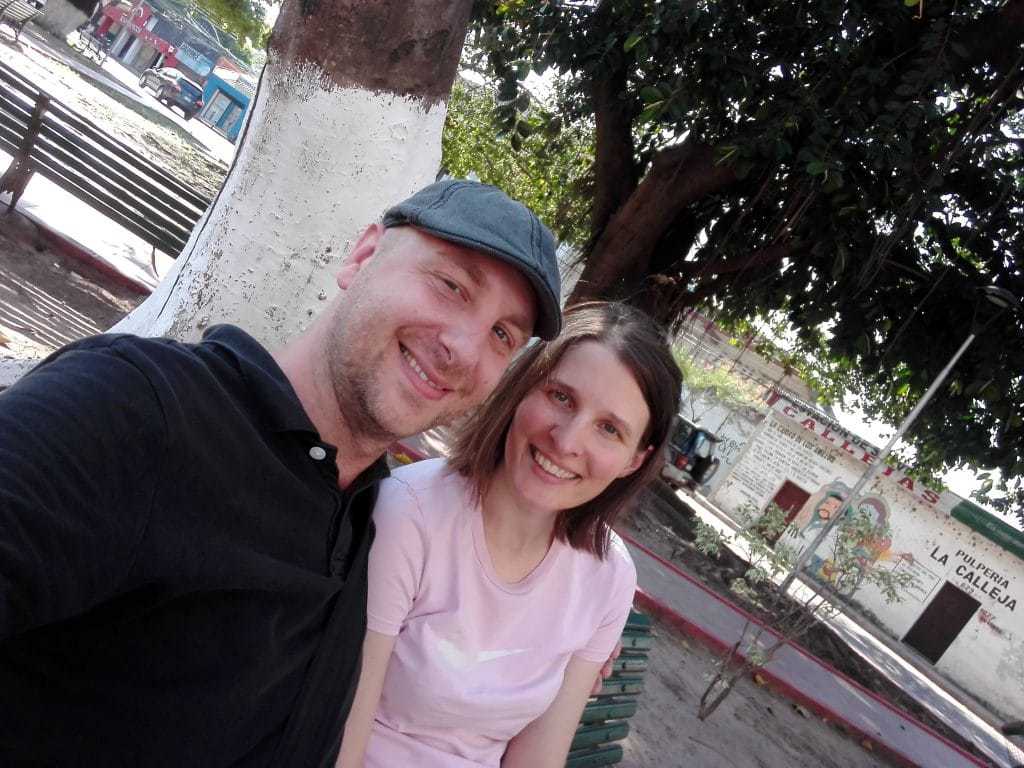Living with the missionaries in Asunción was an interesting experience. After spending three months in Brazil and one month in Paraguay, we often caught ourselves comparing people from one country to another.
I know that this may be unfair and that an estimate doesn’t necessarily reflect all the reality, but still… based on our experience some differences were so obvious that we simply couldn’t miss.

The Paraguayans are different
Before coming to South America, we thought that people in each country were similar in terms of their character. Based on stereotypes, they should be open, optimistic, joyful and full of life.
However, based on our experience, the Paraguayans are nothing like the Brazilians – at least the ones we met in Sao Paulo.
They are restrained, introverted, more serious, perhaps even sad. I believe that their heavy history has cut deep into their hearts.
Brazilians and Paraguayans
What surprised us the most and what was the opposite of what we expected when it comes to the character of Brazilians, was their reliability.
What they promised, they did. They attended the meetings and appointments punctually and they never forgot about an arrangement or ignored it.
The Paraguayans are nothing like that as far as this is concerned. Only two examples:
We agreed with a group of young people in the parish to go together to a remote village that’s one of the poorest in the country. We kept postponing and in the end we didn’t go at all.
A young man came once who was a volunteer at an immigrant center. He promised to call us and come visit us, but he never did.
People often invited us to various tours and events, but all the arrangements usually fell through.

Jurandir (Brazilian) also confirmed our observations and said that after one year he is still adjusting to their habits and different values.
Academic quarter
Being late is another thing. We know the meaning of “academic quarter”, but in Paraguay, that’s “academic hour or two”. For us, that was a good exercise in patience.
Paraguayans live slowly. They are never in a hurry; they don’t get upset and are very relaxed.
National consciousness
If anything, they are true to their tradition. They are proud of it. They learn to love their country early and to remain faithful to it.
Their consciousness is usually reflected in small, everyday things.
For example, drinking mate tea. They say it originates in Paraguay and has spread throughout South America.
People walk on the street, carrying their thermo bottles and typical cups filled with green tea mixture.
When it’s hot, they add cold water to the tea. They call it “tereré”. When it’s cold, they add hot water from thermo bottles. They call it “mate”.
Hot or cold, this tea is part of their national identity and it’s hard to find a Paraguayan who wouldn’t stick to it.
By bus to Bolivia
We said goodbye to the Augustinian missionaries headed for Bolivia.
The only acceptable travelling option was by bus, because there’s no train for Bolivia, and flights are really expensive.

But we had to decide which route to the city of Santa Cruz de la Sierra in Bolivia we would choose.
There were two options, but none of them suited us much.
Across Brazil or Chaco
The first one meant going back to Brazil and from there to Santa Cruz. The bus drive would take 33 hours.
The second option was going directly to Bolivia, across the province of Chaco, the semi-desert region, which was once completely Bolivian, but the Paraguayans took over 60% of this territory in another bloody and devastating war in the 20th century.
The route across Chaco is usually advised against because it’s uncomfortable. 100 km of the route is not asphalted, besides the Paraguayan busses are unlike Bolivian first-class ones, worn out and uncomfortable, according to the other passengers.
22 hours drive
The advantage of traveling across Chaco is a significantly shorter route. Just 22 hours. In addition, we were told at the bus company that the bus is new, comfortable, and the road is not exhausting.

We didn’t rely too much on their saying; we’ve heard and read too many stories about deceived travelers to make our decision based only on that.
However, we still chose the second option, even though at the expense of our comfort.
It turned out that the seller didn’t lie to us. We entered a practically new bus and believe it or not, we slept most of the way to Bolivia.
The bus had no stops; breakfast, lunch, snack and dinner were served while driving. The route was not demanding, we also handled the unpaved part of Chaca well.
On the Bolivian border
The only stop was at the Paraguay-Bolivia border, where we had to go through a lengthy and precise check; the passers and their backpacks went through the security scanner first and then through two physical checks.

We stood outside in a queue. There were simple wooden desks in front of us. The customs officers checked our luggage based on the “open and put everything out” system.
While all the local passengers had to move around their clothes and other belongings, we were thankfully spared. In Bolivia, the Westerners are clearly in their good books.
However, such caution and precision are understandable and actually necessary. Brazil, Paraguay, and Bolivia – we are talking about global giants in the production and distribution of drugs.
From door to door
We didn’t know anyone in Bolivia, so we had to go from door to door once again after a long time.
We decided that we would first take a few days time just for us – a holiday that we haven’t afforded in a long time.

We rented a cheap room in a hotel near the city center (5 Euros per night for both) and spent a few days exploring Santa Cruz de la Sierra.
We met tourists, many of them were Europeans, studied the faces of the Bolivians (that were so typically indigenous), set our pulse to the pulse of the city, and tried very hard not to be depressed too much because of all the misery and poverty we saw.
Looking at poverty
It broke our hearts to see homeless families that spent the night on the sidewalks.
We were deeply saddened by the kids who begged at the restaurants of Santa Cruz. Not for money, but for food.
They get a piece of meat from time to time from good-natured guests, they go outside, quickly eat and then return inside.
A step forward
What has God prepared for us in Bolivia? We didn’t know at that time.

When God doesn’t send anyone who would directs us forward, then we have to make the first step.
At Claretinians
When we walked down the street one day, we accidentally encountered a large monastery of the Claretinians.
We knew that their charisma was devoted to helping the poor, so we didn’t hesitate to knock on their door.
He accepted a Claretinian priest. We told him that we travel around the world, visit missions and charity communities, work as volunteers, write about our work and help collect donations for mission projects.
We left him our email and phone number. We agreed to meet again in two days, while he would consult with other priests and consider the possibility of our help.
In front of a closed door
When we returned on Monday and stood in front of a closed door and rang the bell, nobody would open. Not even after one hour of waiting. Not even after two.

Father might have forgotten, maybe he wasn’t home, but maybe he just didn’t want to open. He didn’t send us any messages. Just as well. God knows why.
Shalom
We continued searching. On the internet, we found Scalabrinian Sisters, a community serving the neediest migrants. The community is near our accommodation, so we walked there.
However, we didn’t find Scalabrinian Sisters on that address but a Catholic community called “Shalom” where several lay persons share their lives with the mission of PRAYER and evangelization.
We explained to a young man who opened the door that we were looking for Scalabrinian Sisters. We found out that the sisters moved years ago.
That “something”
We could have said goodbye to the “Shalom” community and gone on, but the young man listened to us talking about Operando with such interest that we felt God had something for us here after all.
We weren’t wrong. Soon we discovered what God’s plan was. But I’ll write about this in the next article.



